- Joined
- Aug 15, 2000
- Messages
- 18,876
Topic: Simple Science: Is shallow or deep better?
Often diamond choice comes down to dollars – with many complex trade-offs. This just as true for you, the consumer, as it is for a diamond cutter planning the proportions to polish each rough diamond. Here on Pricescope many people would prefer a very tight set of “Tolkowsky” or “ideal” proportions; but this limit’s the cutters options to achieve a desirable and important carat weight yield. I would like to facilitate better economics for cutters and consumers and help ensure more of those choices lead to more sparkly diamonds.
I seem to have become the champion of slightly shallow diamonds, and the enemy of slightly deep ones. I have debated this with many experts. And many disagree with me.
But many peoples buying decisions are influenced by my opinion via HCA results, so it seems like a good idea to explain the pro’s and con’s of shallow and deeper diamonds in simple terms.
First let’s consider some reasons why I may be wrong:
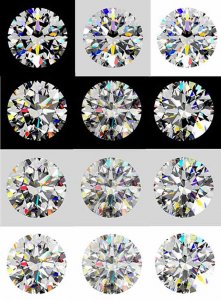
Often diamond choice comes down to dollars – with many complex trade-offs. This just as true for you, the consumer, as it is for a diamond cutter planning the proportions to polish each rough diamond. Here on Pricescope many people would prefer a very tight set of “Tolkowsky” or “ideal” proportions; but this limit’s the cutters options to achieve a desirable and important carat weight yield. I would like to facilitate better economics for cutters and consumers and help ensure more of those choices lead to more sparkly diamonds.
I seem to have become the champion of slightly shallow diamonds, and the enemy of slightly deep ones. I have debated this with many experts. And many disagree with me.
But many peoples buying decisions are influenced by my opinion via HCA results, so it seems like a good idea to explain the pro’s and con’s of shallow and deeper diamonds in simple terms.
First let’s consider some reasons why I may be wrong:
- On the side in favour of the slightly deep stones the leading Russian scientist and developer of DiamCalc, Sergey Sivovolenko, has persuaded me that years ago I placed too much importance on leakage apparent through the Ideal-Scope:
- Ideal-scope images are a single eyed top dead center view - when each of our 2 eyes sees the stone from about 5 degrees of tilt from the left and the right - slightly leaky stones look less leaky. This image attempts to show the 'canceling out' of steep deep stone with leakage caused by stero-scopic vision. The first row shows the same virtual diamond as it would appear from the top with black, gray and white backgrounds. Notice the dark ring of leakage inside the table on the black background? On the second row notice that from the left eye’s and the right eyes point of view there is less leakage. The combined central image is an attempt to show why our 2 eyes do not see such a bad looking dark leakage zone.
- Just because a diamond has some leakage does not mean that it can not have very great light return. Most fancy shapes have a lot more leakage, but people still like them. And some slightly steep deep diamonds (say +0.5 degree pavilion angle to 41.25°) still have very good DiamCalc computed light return.
- The ideal-scope and all colored reflector scopes exaggerate leakage (it is a human color intensity perception issue).
- Ideal-scope images are a single eyed top dead center view - when each of our 2 eyes sees the stone from about 5 degrees of tilt from the left and the right - slightly leaky stones look less leaky. This image attempts to show the 'canceling out' of steep deep stone with leakage caused by stero-scopic vision. The first row shows the same virtual diamond as it would appear from the top with black, gray and white backgrounds. Notice the dark ring of leakage inside the table on the black background? On the second row notice that from the left eye’s and the right eyes point of view there is less leakage. The combined central image is an attempt to show why our 2 eyes do not see such a bad looking dark leakage zone.
- When set in high 4 claw ring settings deep leaky stones are able to get some light from underneath and behind - so the leakage zones do not look too dark- and light sources from partial leakage are from light entering close to the critical angle - which can emerge out the crown as broadly dispersed firey flashes.
- Young couples (<30) buying engagement rings often focus from very close up (from less than 6 inches – 15cm) – they may reject shallow stones because the table region can look dark because their head is so close it blocks light sources.
- Fish eye’s are usually shallow stones. But not always; a fish eye effect is a result of a combination of pavilion angle, table size and to a lesser extent crown height and girdle thickness. For instance a diamond can have a 57% table size and less than 59% depth and still not show a Fish-eye.






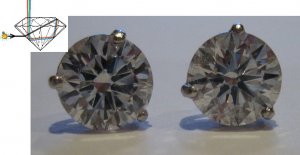


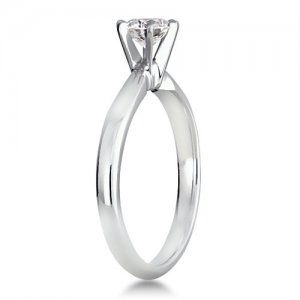
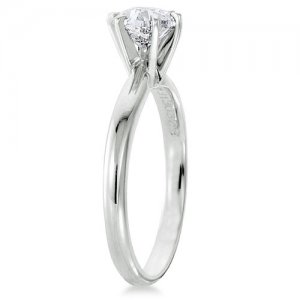
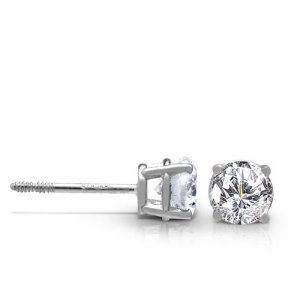
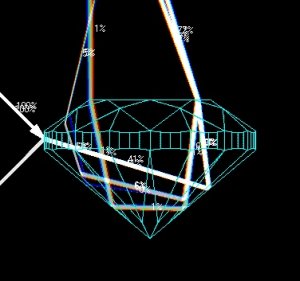
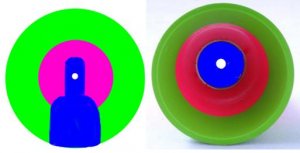
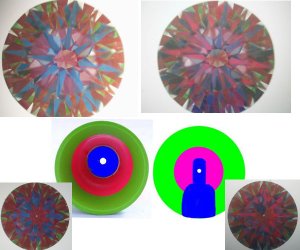
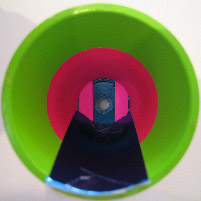



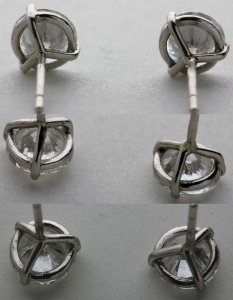
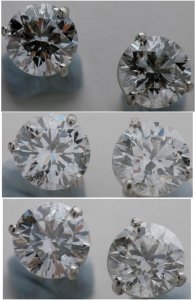
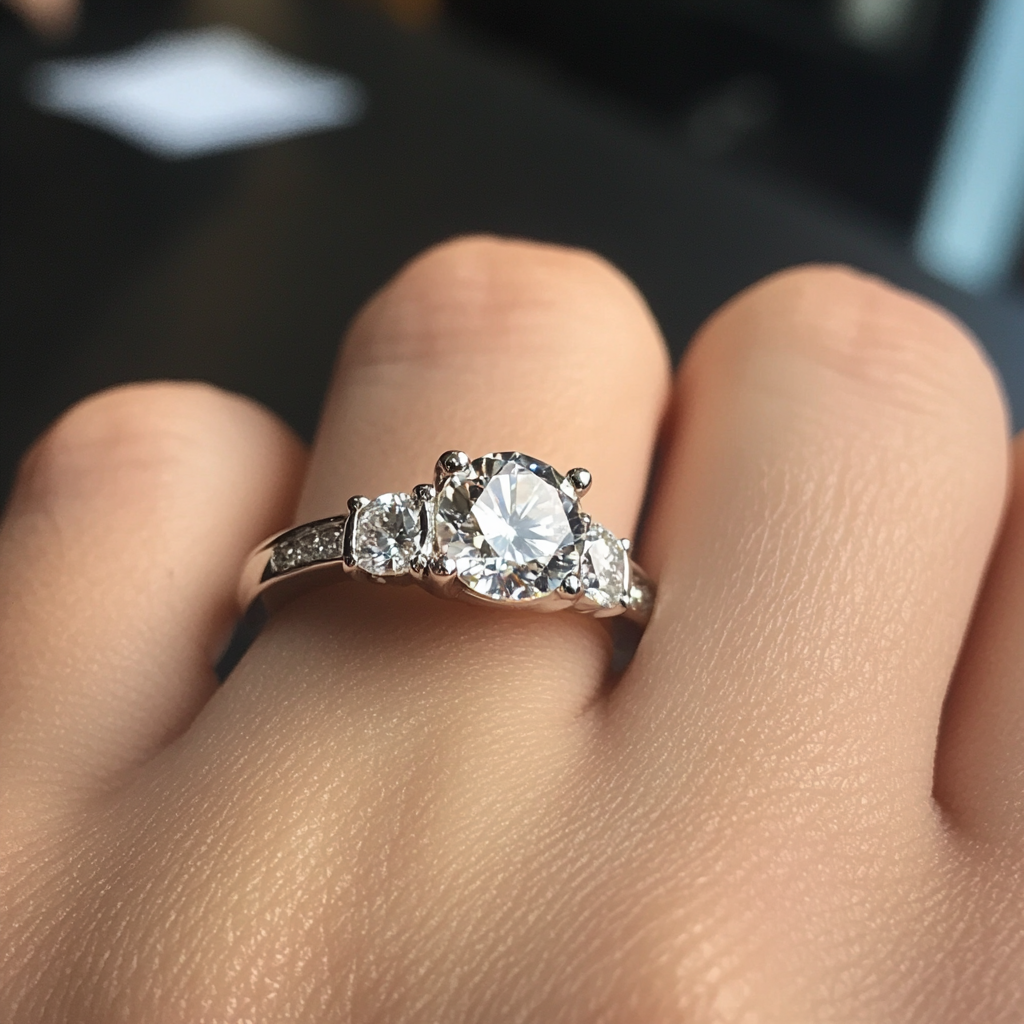

300x240.png)